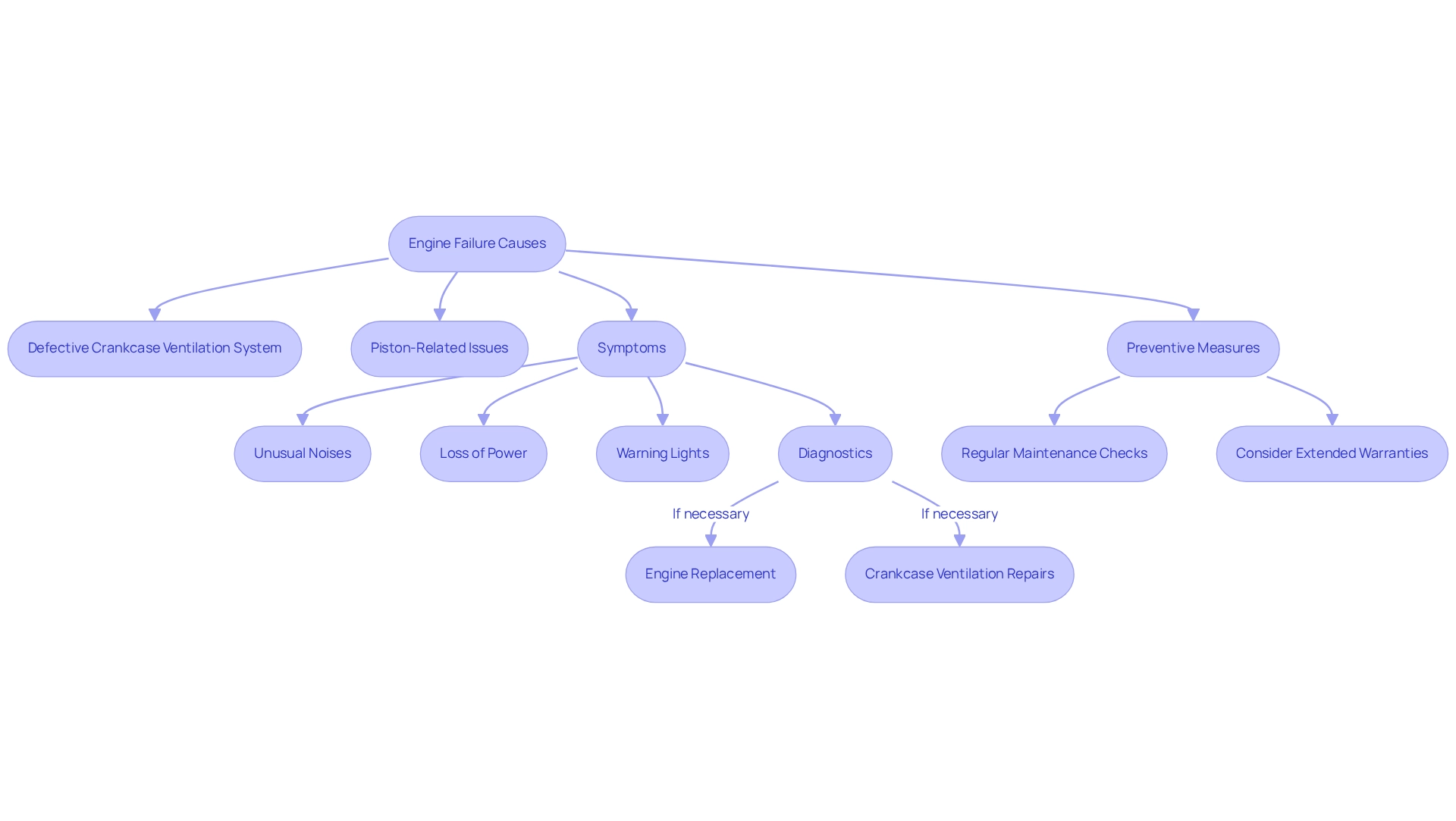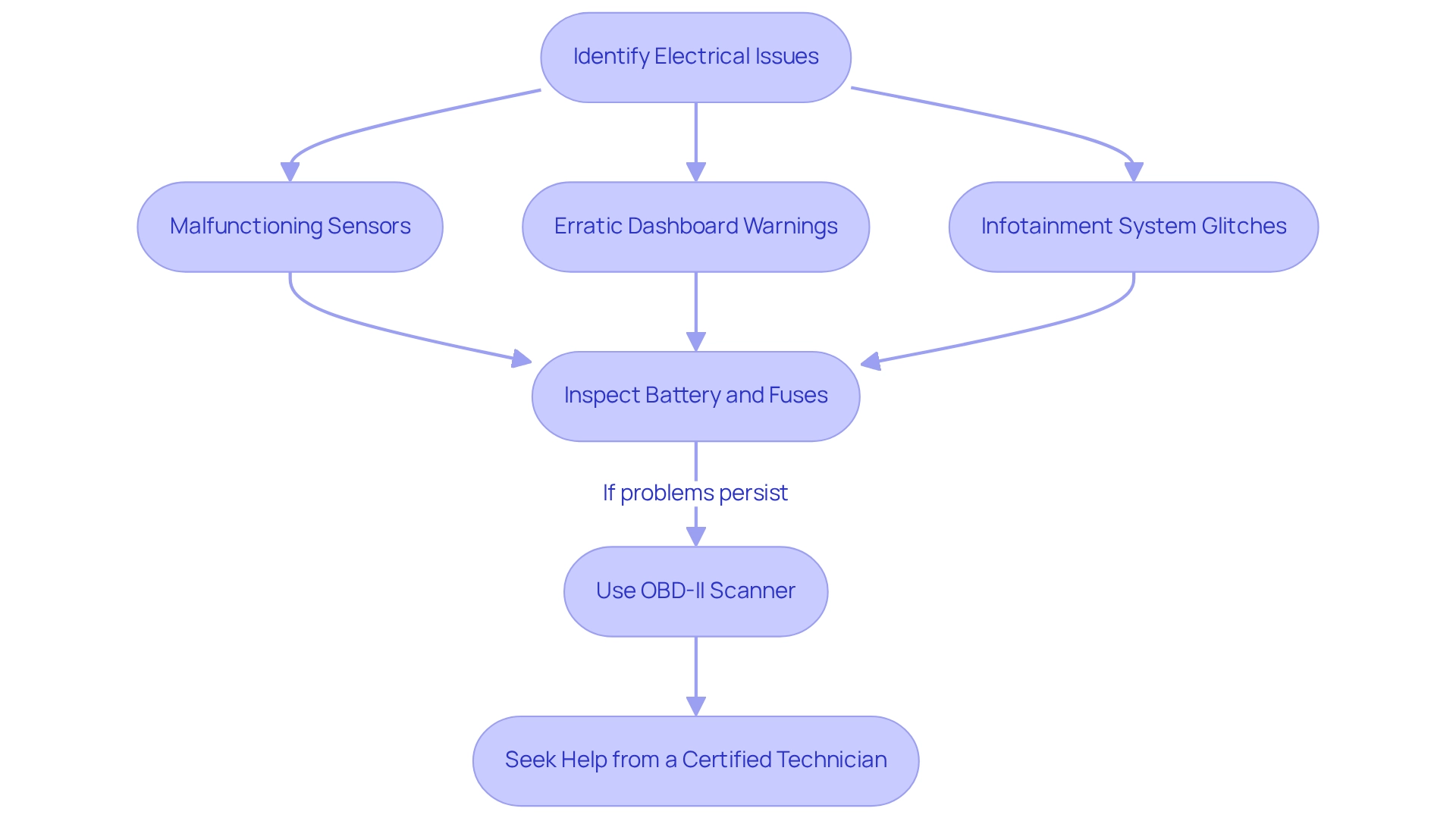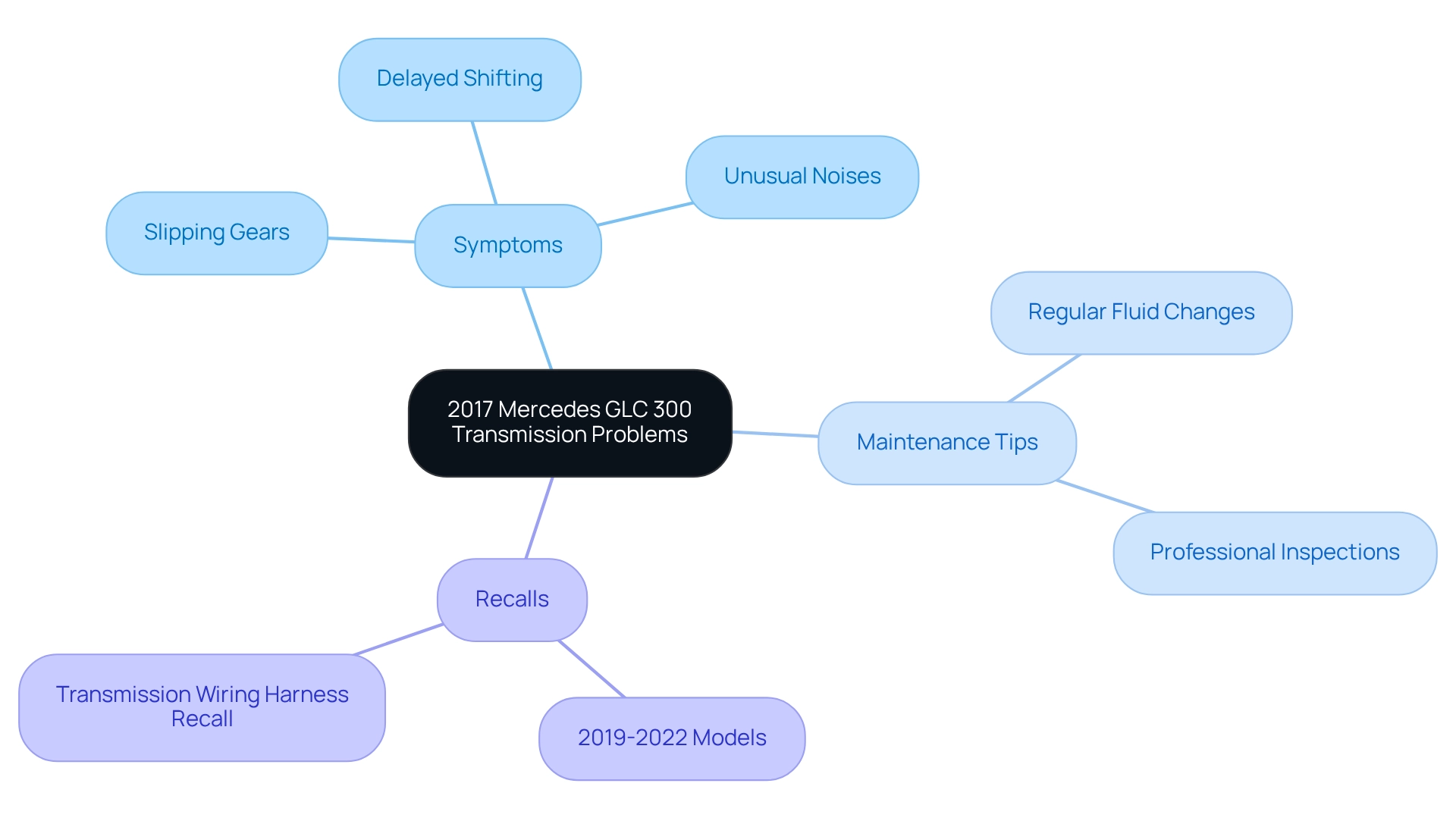5 Common 2017 Mercedes GLC 300 Problems and Solutions
Overview
This article explores the prevalent issues encountered by the 2017 Mercedes GLC 300. Key problems include:
- Engine failure
- Electrical system malfunctions
- Transmission difficulties
- Suspension issues
- Brake-related safety concerns
Each problem is detailed with specific symptoms and potential causes, along with recommended maintenance strategies.
Why is this important? Proactive care is essential to ensure the reliability and safety of your vehicle. By understanding these common issues, owners can take steps to mitigate risks and enhance their driving experience.
Introduction
In the realm of luxury vehicles, the 2017 Mercedes GLC 300 stands out for its blend of style and performance. However, beneath its polished exterior lies a series of potential mechanical challenges that owners must navigate. Understanding these common problems is essential for maintaining reliability.
What issues should GLC 300 owners be aware of? From engine failures linked to crankcase ventilation issues to electrical system glitches that can disrupt the driving experience, these concerns can significantly affect both safety and comfort on the road. Additionally, transmission troubles and suspension shortcomings can impact the overall driving experience.
This article delves into the critical issues faced by the GLC 300, offering insights into their causes, symptoms, and proactive solutions. By being informed, discerning drivers can ensure that this luxury SUV remains a dependable choice.
2017 Mercedes GLC 300 Engine Failure: Causes and Solutions
Several factors can lead to engine failure, contributing to the 2017 Mercedes GLC 300 problems, particularly defective crankcase ventilation systems and piston-related issues. Symptoms often manifest as unusual noises, a noticeable loss of power, and warning lights illuminating on the dashboard.
For instance, an unnamed owner reported a clicking sound from the steering at low speeds while turning, which may indicate underlying engine problems. Furthermore, the 2017 Mercedes GLC 300 problems include a keyless entry system that might require a reset, underscoring another common issue faced by owners.
To mitigate the risk of engine failure, regular maintenance checks are essential. In the event of engine failure, it is crucial to conduct prompt diagnostics to identify specific 2017 Mercedes GLC 300 problems, which may necessitate either engine replacement or repairs to the crankcase ventilation system.
Additionally, budget-conscious consumers should be aware of the GLC’s higher-than-average depreciation compared to its competitors. This factor, coupled with reliability concerns about 2017 Mercedes GLC 300 problems, suggests that the GLC may not be the optimal investment for those seeking a luxury compact SUV.
Finally, owners should contemplate extended warranties that cover engine repairs, providing financial protection against potential high costs associated with engine issues.
2017 Mercedes GLC 300 Electrical System Issues: Troubleshooting Tips
The 2017 Mercedes GLC 300 problems include several common electrical issues, such as:
- Malfunctioning sensors
- Erratic dashboard warnings
- Infotainment system glitches
To troubleshoot these problems, owners should first inspect the battery and fuses, as these components often contribute to electrical failures. If issues persist, utilizing an OBD-II scanner can assist in identifying specific error codes. For ongoing electrical concerns, seeking help from a certified technician is advisable to ensure accurate diagnosis and repair, ultimately preventing further complications and unnecessary expenses.
Given that luxury vehicles like the GLC 300 may experience higher rates of electrical failures, addressing the 2017 Mercedes GLC 300 problems promptly is crucial for maintaining reliability. A recent survey, which garnered 29,697 responses across 199 models from 31 brands, provides context for understanding the GLC 300’s reliability among luxury automobiles. Notably, the Mercedes Reliability Survey indicated that Mercedes achieved a reliability rating of 89.7%, establishing a benchmark for evaluating the 2017 Mercedes GLC 300 problems, particularly its electrical challenges.
Furthermore, recent reports have pointed out 2017 Mercedes GLC 300 problems with the steering linkage, further underscoring the importance of timely maintenance. As Confucius wisely stated, ‘The expectations of life depend upon diligence; the mechanic that would perfect his work must first sharpen his tools.’ This emphasizes the necessity of proactive troubleshooting and maintenance for luxury car owners.
2017 Mercedes GLC 300 Transmission Problems: Signs to Watch For
Signs of 2017 Mercedes GLC 300 problems can manifest in several ways, particularly related to the transmission. Common indicators that point to 2017 Mercedes GLC 300 problems include:
- Slipping gears
- Delayed shifting
- Unusual noises during gear changes
Additionally, owners should be vigilant about fluid leaks under the car, as these can signal significant issues related to 2017 Mercedes GLC 300 problems. Regular maintenance, especially timely transmission fluid changes, is essential for preventing problems associated with the 2017 Mercedes GLC 300. If any symptoms arise related to 2017 Mercedes GLC 300 problems, seeking a professional inspection is crucial. As noted by Lancer Service, “Ensure your safety with expert advice from Lancer Service.” Timely identification and action can greatly lower repair expenses and ensure the vehicle continues to function efficiently, protecting both performance and safety.
It’s also worth mentioning that Mercedes-Benz USA, LLC has announced recalls for certain 2019-2022 GLC 300 models due to transmission-related concerns. This highlights the importance of monitoring for these issues. Furthermore, the Transmission Wiring Harness Recall serves as a reminder of the potential implications of transmission problems in similar models. Staying updated on these developments can assist owners in remaining informed and proactive about their maintenance.
2017 Mercedes GLC 300 Suspension Problems: Impact on Driving Experience
The driving experience can be significantly impacted by suspension problems associated with the 2017 Mercedes GLC 300. Common symptoms associated with 2017 Mercedes GLC 300 problems include:
- A harsh ride
- Excessive bouncing
- Unusual noises when navigating bumps
The 2017 Mercedes GLC 300 problems not only compromise comfort but can also lead to uneven tire wear and reduced handling capabilities, such as:
- Difficulty in steering
- Extended stopping distances
For instance, the 2017 Mercedes GLC 300 problems related to severely worn shocks and struts can cause the car to float after bumps and lean excessively, presenting safety hazards and affecting overall performance. The average cost for a Mercedes-Benz C250 suspension shock or strut replacement ranges from $1,225 to $1,396, underscoring the financial implications of neglecting these concerns.
Regular inspections of suspension parts, particularly shocks and struts, are crucial for maintaining vehicle integrity. Technicians typically diagnose worn struts during routine maintenance or alignment checks, often assessing the car’s bounce using body weight. As noted by RepairPal, “That is if proper lifting and supporting of the automobile is understood.” If excessive residual movement is observed, it indicates worn shocks or struts, which are among the 2017 Mercedes GLC 300 problems that require immediate attention. Addressing these suspension problems promptly not only enhances ride quality but also ensures a safer driving experience. Vehicle owners should remain vigilant about their car’s condition and consider scheduling regular maintenance checks. Signs to watch for include:
- Unusual noises
- A bouncy ride
- Handling difficulties
These may indicate that suspension components need attention.
2017 Mercedes GLC 300 Brake Issues: Safety Concerns and Maintenance
The 2017 Mercedes GLC 300 problems often include several common issues related to braking, such as squeaking, grinding noises, and diminished braking performance. These symptoms often indicate worn brake pads or problems with the brake rotors, which can compromise safety. Regular inspection of the braking system is crucial; it helps identify worn components before they lead to more serious issues. Timely replacement of brake pads and rotors not only ensures optimal performance but also enhances safety on the road.
Maintaining the braking system involves more than simply replacing parts. It is essential to check that the brake fluid is at the appropriate level and free from contaminants, as this significantly impacts braking performance. Overlooking these factors can result in increased repair costs and safety hazards. In luxury vehicles like the GLC 300, typical repair expenses can range from $300 to $800, depending on the extent of the damage and the specific components needing attention.
Real-life experiences underscore the importance of promptly addressing the problems associated with the 2017 Mercedes GLC 300, particularly those related to braking. For instance, one owner reported a persistent squeal from the braking system at low speeds, highlighting one of the 2017 Mercedes GLC 300 problems, stating, “I had horrific noise at low speed and complained to the dealer who checked the car and came back saying MB wouldn’t do anything. I kicked up a fuss and they replaced the rear pads… Cured the squealing for a while but back occasionally now when reversing.” This highlights the necessity for thorough inspections and trust in the service provided.
Additionally, it is important to note that past incidents have triggered an inquiry concerning 2.4 million vehicles, highlighting the broader implications of braking issues in luxury cars. Experts advocate for proactive maintenance strategies, such as regular brake fluid changes and inspections, to alleviate safety concerns associated with brake problems. By remaining vigilant and addressing issues early, GLC 300 owners can ensure their vehicle stays safe and reliable.
Conclusion
The 2017 Mercedes GLC 300 stands out as a luxurious choice for drivers; however, it presents several mechanical challenges that require careful attention. Key issues include:
- Potential engine failures stemming from crankcase ventilation problems, which necessitate regular maintenance to avoid costly repairs.
- Electrical system glitches, such as malfunctioning sensors and warning lights, can disrupt the driving experience, underscoring the importance of timely troubleshooting and professional assistance.
- Transmission problems, including slipping gears and fluid leaks, further highlight the necessity for regular inspections and fluid changes to prevent significant repair costs.
- Suspension issues can detract from the vehicle’s comfort and handling, emphasizing the need for routine checks to maintain safety and performance.
- Brake problems, characterized by unusual noises and decreased efficiency, require proactive maintenance strategies to ensure reliability and safety on the road.
In summary, understanding these common issues is crucial for GLC 300 owners who wish to maintain their vehicle’s performance and reliability. By prioritizing regular inspections and addressing concerns promptly, drivers can enjoy the luxury of their SUV while minimizing the risks associated with mechanical failures. Staying informed and proactive is key to ensuring that the 2017 Mercedes GLC 300 remains a dependable and enjoyable choice for years to come.
Frequently Asked Questions
What are the common causes of engine failure in the 2017 Mercedes GLC 300?
Common causes of engine failure in the 2017 Mercedes GLC 300 include defective crankcase ventilation systems and piston-related issues.
What symptoms indicate potential engine problems in the 2017 Mercedes GLC 300?
Symptoms of potential engine problems include unusual noises, a noticeable loss of power, and warning lights illuminating on the dashboard.
What specific issue was reported by an owner regarding the steering in the 2017 Mercedes GLC 300?
An owner reported a clicking sound from the steering at low speeds while turning, which may indicate underlying engine problems.
What other common problem do 2017 Mercedes GLC 300 owners face?
Owners may experience issues with the keyless entry system, which might require a reset.
How can owners mitigate the risk of engine failure in the 2017 Mercedes GLC 300?
Regular maintenance checks are essential to mitigate the risk of engine failure.
What should be done in the event of engine failure?
It is crucial to conduct prompt diagnostics to identify specific problems, which may necessitate engine replacement or repairs to the crankcase ventilation system.
What should budget-conscious consumers know about the 2017 Mercedes GLC 300?
Consumers should be aware that the GLC has higher-than-average depreciation compared to its competitors, along with reliability concerns.
What financial protection options are available for owners concerned about engine repairs?
Owners should consider extended warranties that cover engine repairs to protect against potential high costs associated with engine issues.
What are some common electrical issues reported in the 2017 Mercedes GLC 300?
Common electrical issues include malfunctioning sensors, erratic dashboard warnings, and infotainment system glitches.
How can owners troubleshoot electrical problems in the 2017 Mercedes GLC 300?
Owners should first inspect the battery and fuses, and if issues persist, they can use an OBD-II scanner to identify specific error codes. Seeking help from a certified technician is advisable for ongoing concerns.
What is the reliability rating of Mercedes vehicles, including the GLC 300?
The Mercedes Reliability Survey indicated that Mercedes achieved a reliability rating of 89.7%, which serves as a benchmark for evaluating the 2017 Mercedes GLC 300 problems.
What recent reports indicate about the steering linkage in the 2017 Mercedes GLC 300?
Recent reports have pointed out problems with the steering linkage, highlighting the importance of timely maintenance.







